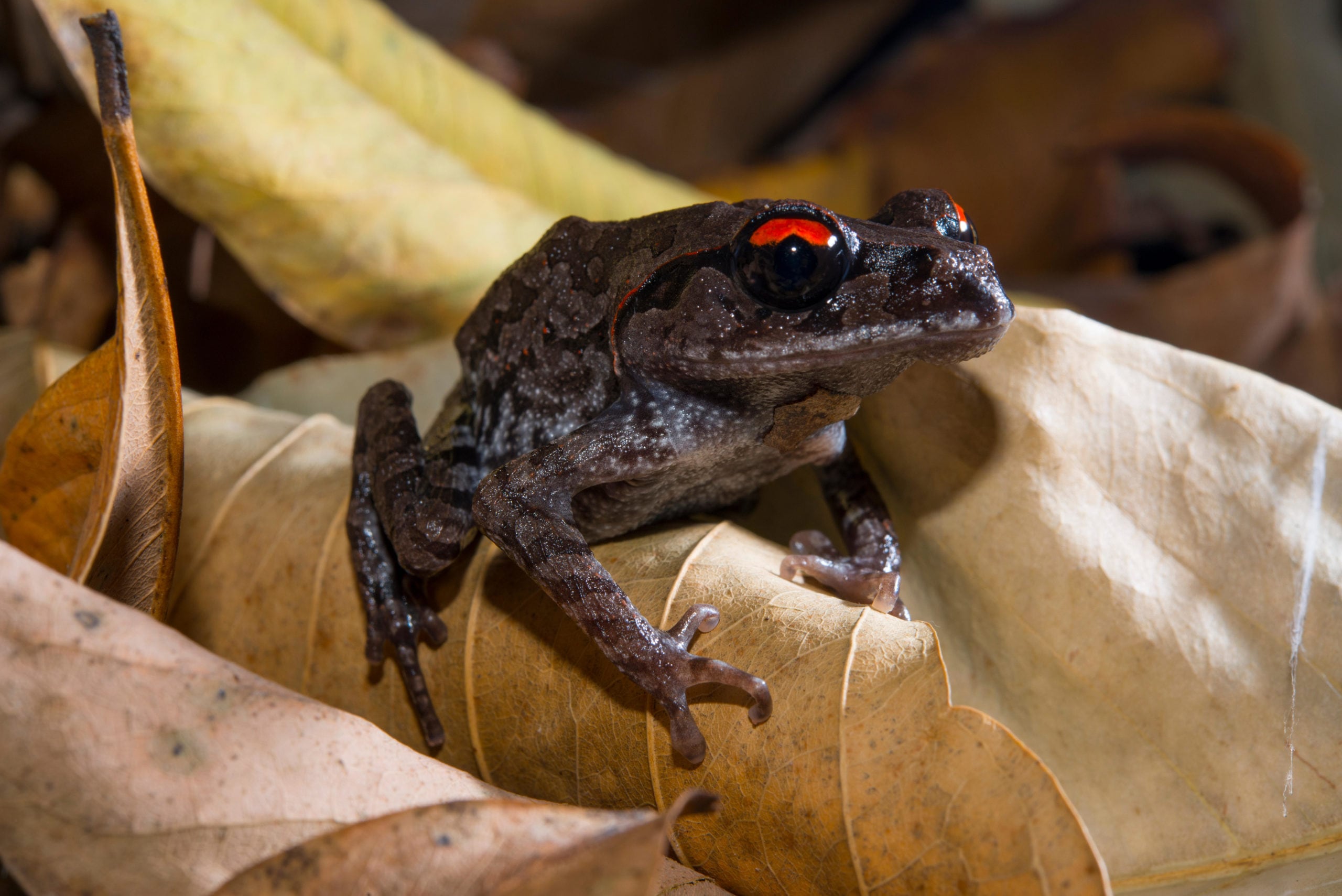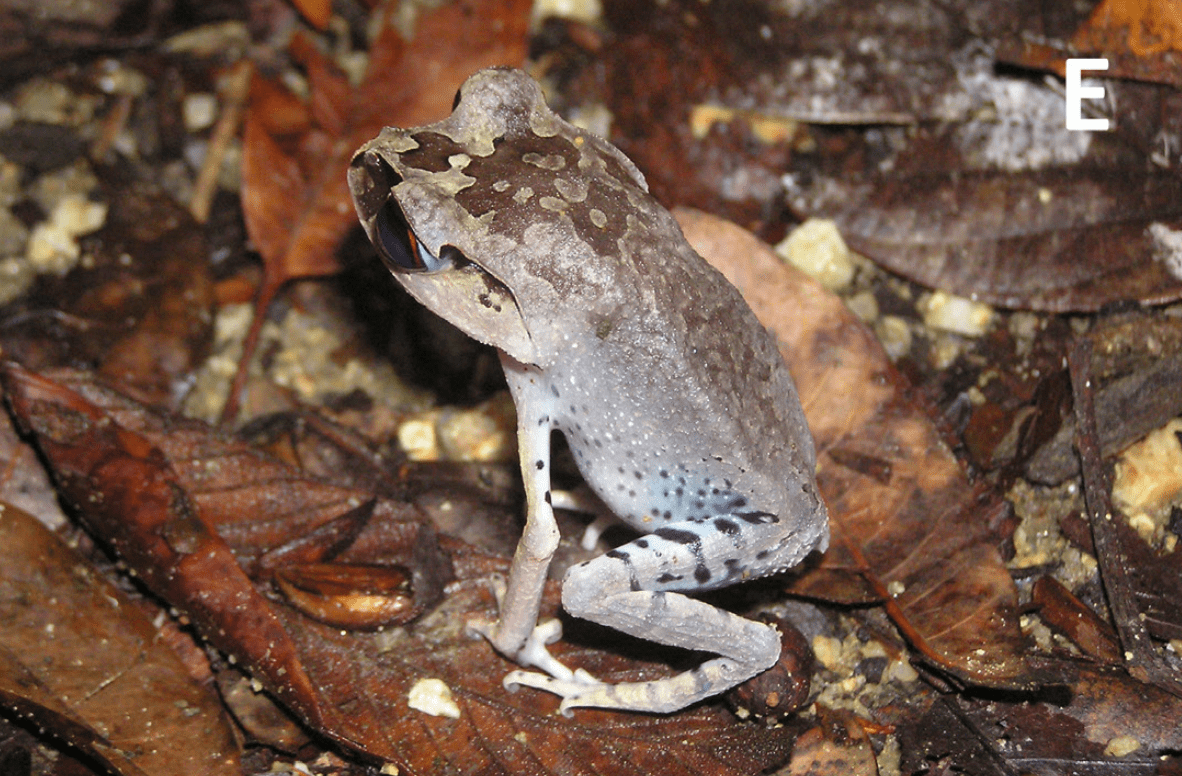The spotted litter frog sits like a human and it has us crying

Bec Crew
Bec Crew

Also known as the Thai spadefoot toad, the spotted litter frog (Leptobrachium hendricksoni) hails from the Malay Peninsula – which includes southern Thailand, Borneo, and Peninsular Malaysia – and Sumatra, an island of western Indonesia. It’s found in moist areas like tropical forests and marshlands, and keeps low to the ground, hiding in leaf litter near stream banks and swamps.
These frogs have stout little bodies, disproportionately large heads, and skinny, elongated legs, which give them a rather peculiar look. Almost like Michigan J. Frog, but without the top hat and cane.
What’s also striking about this frog is its amazing bright red and black iris, which you can see better here:

Photo credit: Nature Picture Library/Alamy Stock Photo
That adorable sitting behaviour is actually a defence mechanism, because this species (like most non-toxic frogs) is a popular target for a wide range of predators, particularly snakes.
When threatened, the frog will opt for one of a number of defensive behaviours.
One is thanatosis, or ‘death feigning’, where it assumes a death-like posture to deter an attack. This behaviour might include puffing its body up to look bloated from decomposition, raising its legs in the air, and adopting a thousand-yard stare:

Another, known as body-raising behaviour, is sitting bolt upright, presumably to make it look bigger and tougher.
Here’s what the behaviour looks like from behind:

The spotted litter frog belongs to the Leptobrachium genus, known collectively as large-eyed litter frogs. There are more than 30 known species spread throughout South East Asia, southern China, and northeast India.
Some species of Leptobrachium frogs have a remarkable feature called nuptial spines, which appear across the males’ face at the height of the breeding season in a moustache-like formation.
Here’s an Emei moustache toad (Leptobrachium boringii), endemic to China, showing off this bizarre feature:

It’s thought that perhaps the spines play a part in sexual selection by facilitating male-on-male combat, or maybe the largest males have the best spines and can therefore mate with the pickiest females.
Speaking of male-on-male combat, here’s footage of a couple of black-eyed litter frog (Leptobrachium nigrops) rivals in Singapore, really going at it:




